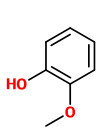Vanilla tahitensis J.W. Moore - Orchidaceae - Tahitian vanilla, Tahiti-Vanille
Evergreen vine, native (only known in cultivation) to Tahiti, cultivated elsewhere; stems zizagging; leaves alternate, short-petioled, up to 20cm long; flowers in lateral spikes, pale yellowish-green, petals and sepals narrow, lip fringe-edged, inside striped yellow-orange, shorter than petals. http://cookislands.bishopmuseum.org/species.asp?id=14082
„In the literature there is contradictory information on the compounds of Tahiti vanilla, particularly concerning the piperonal content. Because of this, Tahitian beans and Tahiti vanilla resinoid were analysed by HPLC. Compared with results obtained on Vanilla planifolia, the Tahitian beans contained relatively low amounts of vanillin and vanillic acid, relatively high amounts of p-hydroxybenzoic acid and considerable amounts of anisic acid and anisyl alcohol. Furthermore, although anisaldehyde was detectable, 3-ethoxy-4-hydroxy-benzaldehyde (“ethylvanillin”), coumarin and piperonal were not. The resinoid contained the same compounds as the beans in the expected amounts and ratios. It has to be supposed that reports of positive piperonal results refer to research on adulterated vanilla beans.“
[Analysis of Tahiti vanilla by high-performance liquid chromatography., Ehlers, D., Pfister, M., Bartholomae, S., Zeitschrift für Lebensmittel-Untersuchung und Forschung, 199(1), 1994, 38-42]
Cured Tahitian vanilla pods contained (ethanolic extract, HPLC) p-hydroxybenzoic acid (0.48%), vanillic acid (0.06%), p-hydroxybenzaldehyde (0.09%), vanillin (0.5%), p-anisyl alcohol (0.6%), p-anisic acid (0.56%), and p-anisaldehyde (0.02%).
[Ehlers, Dorothea, and Michael Pfister. „Compounds of vanillons (Vanilla pompona Schiede).“ Journal of Essential Oil Research 9.4 (1997): 427-431]
„Special mention is necessary for the enigmatic V. x tahitensis J.W.Moore, described from Tahiti, but apparently introduced to the botanic garden at Papeete from Manila, Philippines in 1848, together with the true V. planifolia (Pétard 1986: 123; Hermann et al. 1989: 20). Vanilla tahitensis is very similar in morphology to some Central American taxa, and very different from the Old World vanillas… data indicate clearly that V. tahitensis is very closely related to V.odorata. Vanilla tahitensis is clearly a member of the American fragrant clade of vanilla, characterized by leafy plants and penicillate calluses, and which is absent in the Old World Tropics (as in New Guinea where the vanillas geographically nearest to Tahiti occur), therefore the hypothesis that it was introduced recently to Tahiti is strongly supported. Since vegetatively it has much broader leaves than V.odorata, it is almost certain that it is not conspecific with this species. The flower is larger than in V. planifolia, and it is rather intermediate in all traits between V. planifolia and V. odorata.“
[A revision of the Mexican and Central American species of Vanilla Plumier ex Miller with a characterization of their ITS region of the nuclear ribosomal DNA., Arenas, M.A.S., Dressler, R.L., Lankesteriana, 9(3), 2009, 285-354] http://www.revistas.ucr.ac.cr/index.php/lankesteriana/article/viewFile/12065/11354
„Less than one part per million of heliotropin is accurately detected in authentic Tahitian vanilla beans… This confirms previous observations, which had shown that 4-methoxyaromatic compounds are the characteristic element in the flavor of Tahitian vanilla, with p-anisaldehyde as the main aroma donor.“
[Heliotropin, heliotrope odor and Tahitian vanilla flavor: the end of a saga?., Joulain, D., Laurent, R., Masson, J., Beolor, J. C., Brevard, H., Natural Product Communications, 2(3), 2007, 305-308.]
GC-O analysis performed on Vanilla × tahitensis flavor showed 61 odorant zones. Of 38 odor active compounds found, anisaldehyde and guaiacol have been identified as key components of the complex Tahitian vanilla flavor.
[Brunschwig, C., et al. „Odor-active compounds of Tahitian vanilla flavor.“ Food Research International 46.1 (2012): 148-157]
„The key odorants of Tahitian vanilla beans (Vanilla tahitensis) were characterized by a sensory evaluation, aroma extract dilution analysis (AEDA), quantification, and aroma reconstitution. Vanillin and anisaldehyde were identified in the same highest flavor dilution (FD) factor as the most characteristic odor-active compounds in Tahitian vanilla beans, followed by anisyl alcohol and anisyl acetate. Vanillin and anisyl alcohol were by far the most abundant odorants present with the highest concentration in the beans, followed by acetic acid, anisaldehyde, and anisyl acetate. A sensory evaluation of Tahitian vanilla beans and its reconstitute aroma concentrate characterized both samples as similar. These results indicated vanillin, anisaldehyde, anisyl alcohol, and anisyl acetate to be the key odorants in Tahitian vanilla beans. 3-Methylnonane-2,4-dione were identified for the first time in vanilla beans. β-Damascenone and phenylacetic acid were identified for the first time in Tahitian vanilla beans…
…the aroma of Tahitian vanilla beans was predominantly floral, whereas that of Madagascar vanilla beans was resinous and dried fruit-like.“
[Identification of the Key Odorants in Tahitian Cured Vanilla Beans (Vanilla tahitensis) by GC-MS and an Aroma Extract Dilution Analysis., Takahashi, M., Inai, Y., Miyazawa, N., Kurobayashi, Y., Fujita, A., Bioscience, biotechnology, and biochemistry, 77(3), 2013, 601-605] http://www.tandfonline.com/doi/pdf/10.1271/bbb.120840
Main volatile compounds of SDE extracts from V.tahitensis were furfural, anisyl alchohol, anisaldehyde, methyl anisate, anisyl acetate, methyl cinnamate, p-vinylguaiacol and vanillin.
„The V. ×tahitensis flavour from French Polynesia was characterized by a well‐balanced sensory profile, having strong anise and caramel notes due to high levels of anisyl compounds. V. ×tahitensis from Papua New Guinea was distinct from that of French Polynesia, having strong spicy, fruity, brown rum notes due to p‐vinylguaiacol, p‐cresol and esters.“
[Brunschwig, Christel, et al. „Volatile composition and sensory properties of Vanilla× tahitensis bring new insights for vanilla quality control.“ Journal of the Science of Food and Agriculture 96.3 (2016): 848-858]

Vanilla tahitensis; McCormack, Gerald (2007) Cook Islands Biodiversity Database, Version 2007.2.
Cook Islands Natural Heritage Trust, Rarotonga. Online at http://cookislands.bishopmuseum.org.


